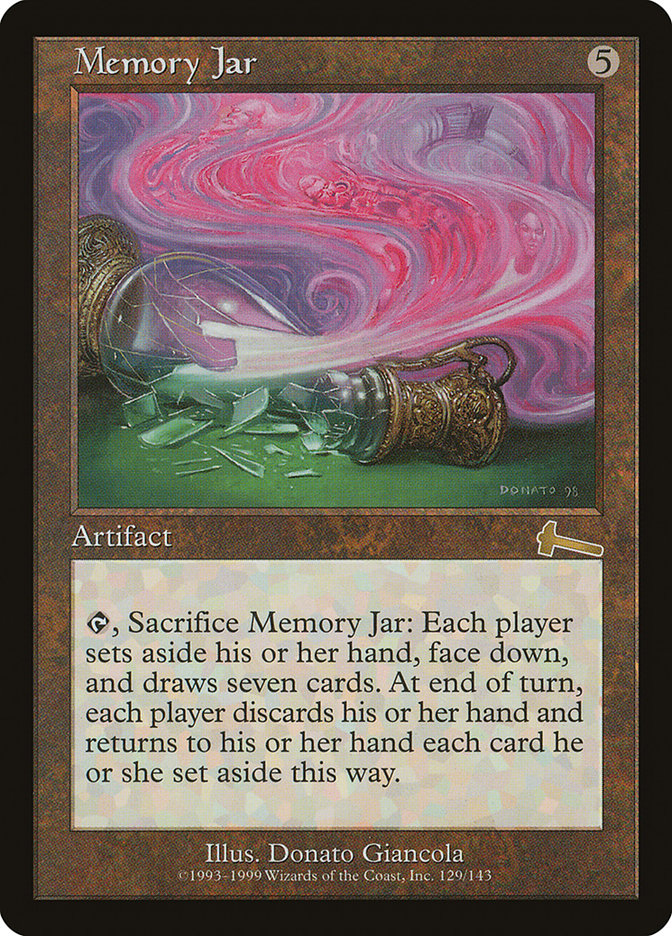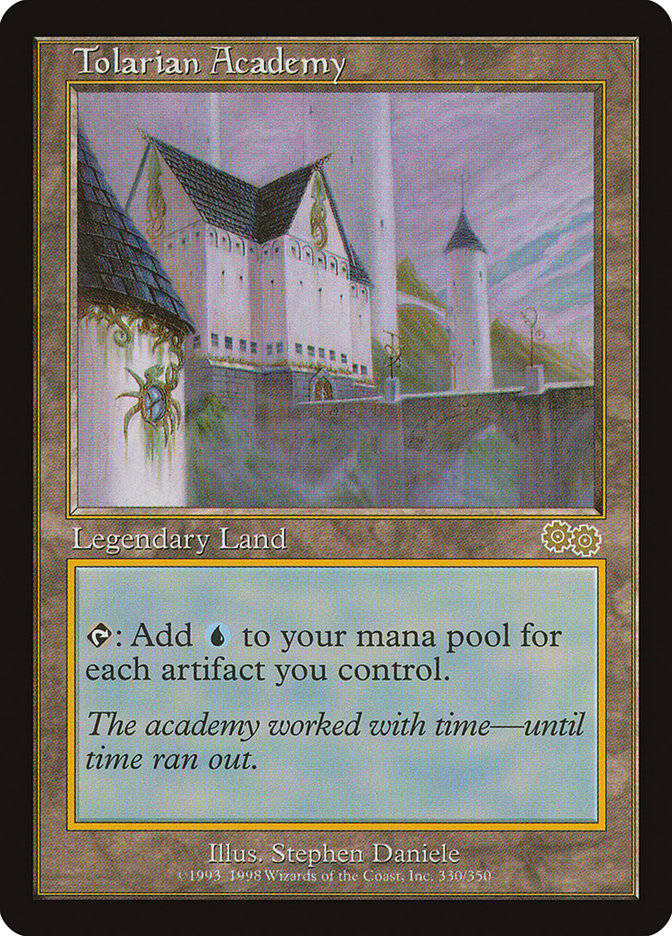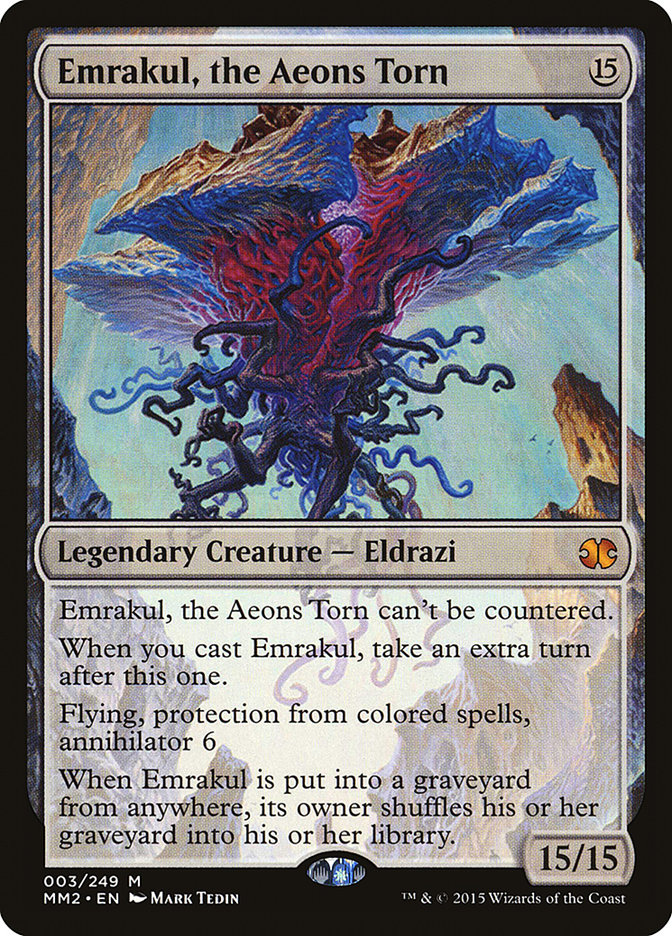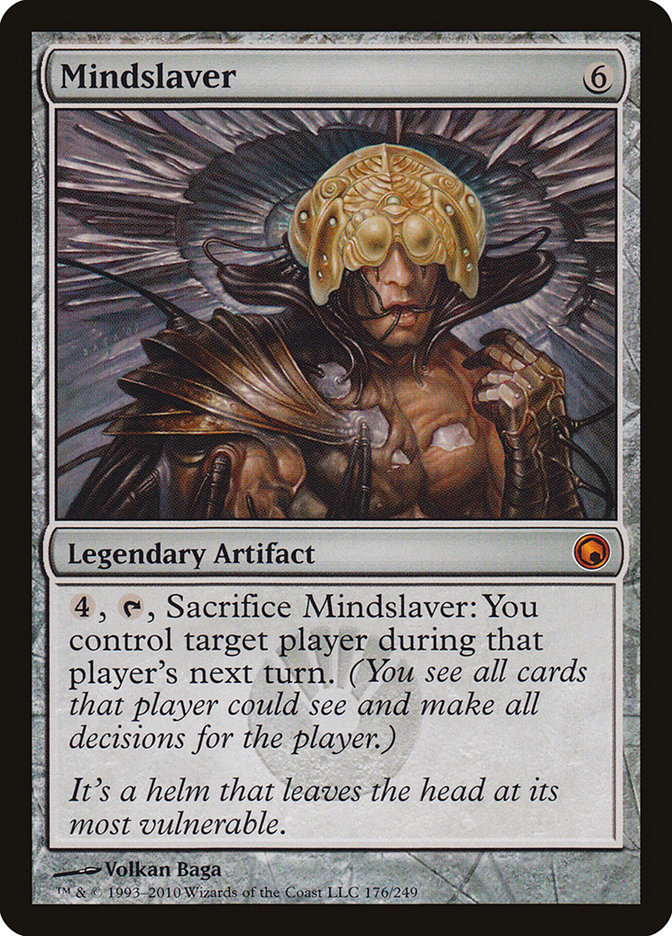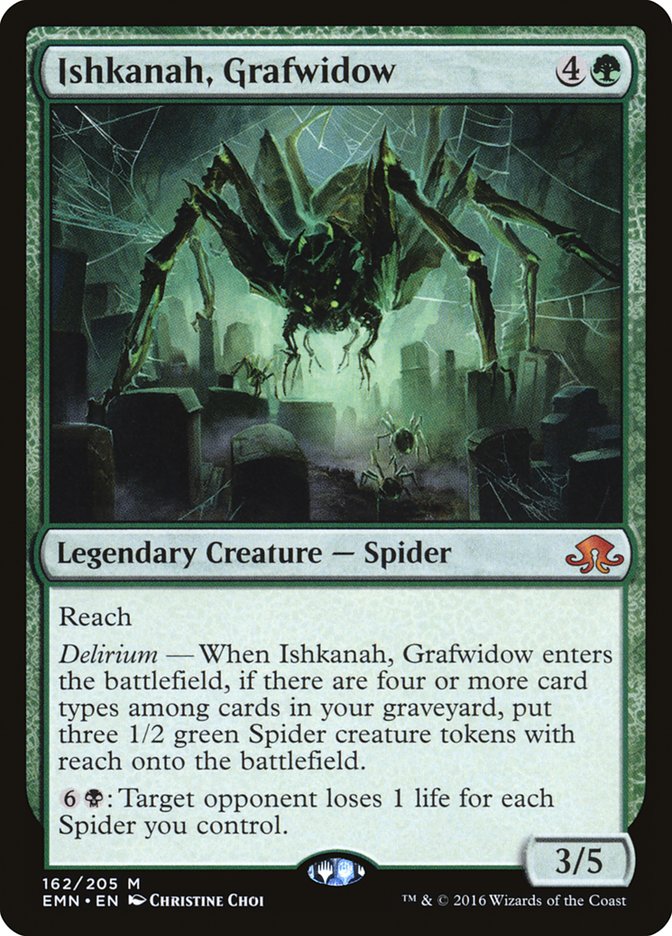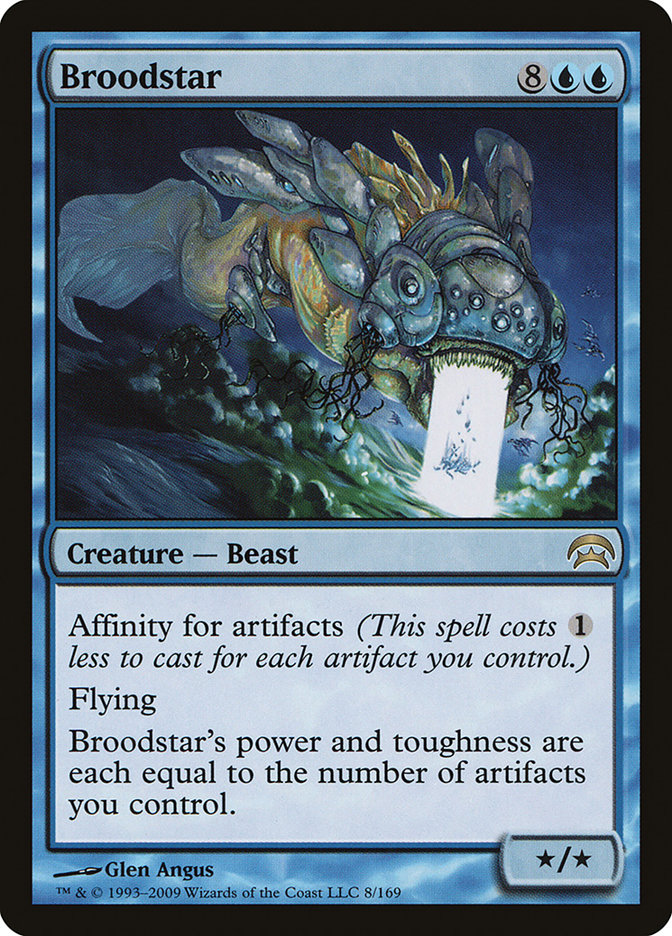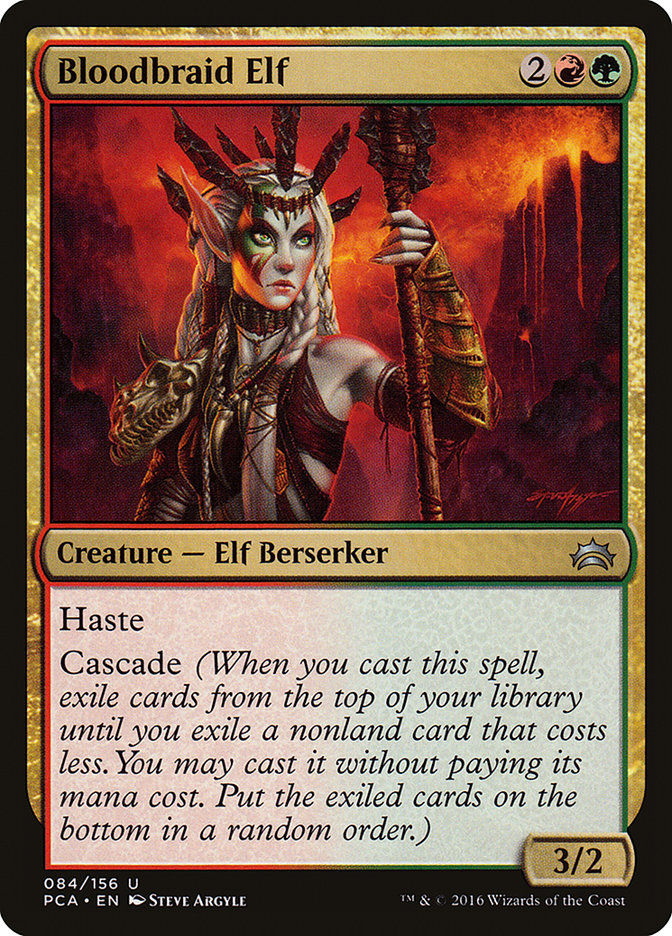“Well, at least it’s going to be different this time.” – Patrick Sullivan
As a spectator of the Players’ Championship in the heart of the Anderson household all weekend, I was privy to the grueling nature of every Standard round on the broadcast. At some point, the only way for the commentators to face the repetitive nature of the format is with humor.
Let’s face it: hating on Standard has always been fashionable in some capacity.
The pinnacle of Standard health.
It’s easy to say that the best deck is too powerful or that the metagame is too stale, but when 3000 Twitch viewers seamlessly disappear in the transition from Scalding Tarn to Aether Hub, that’s a loud declaration. People don’t enjoy watching or playing Standard right now. Players are so desperate for a reprieve from the current format that a new format, Frontier, has started to pick up in popularity (which we’ll get into a bit later).
Your Standard Disclaimer
I’m not interested in stirring the pot just for the sake of controversy. Saying something is bad or that you aren’t having fun simply for the sake of your opinion being heard isn’t particularly productive. What I’m actually interested in is trying to dissect the big problems with Standard from a design perspective and take a look at problematic trends in play patterns.
The big question – what’s to blame?
A Marvelous Red Herring
Many have noted that they despise the random nature of Aetherworks Marvel and the energy mechanic. The games are too swingy and they dislike being subject to an “unbeatable” draw.
Is Aetherworks Marvel a poorly designed card though? It has a real cost both in terms of deckbuilding and variance. It creates exciting moments and pushes the themes of Kaladesh.
Most importantly, it looks and feels like what a mythic artifact in this unique world should be doing.
There are two problems, though: the ceiling is too high, and folks figured out how to build the deck too quickly. Pro Tour Kaladesh featured full-blown combo decks that were incredibly inconsistent and prone to finicky draws. They were highly vulnerable to W/U Flash and any other deck that was interested in appropriately interacting with it. It was a good deck for coverage that produced some great moments but was ultimately not too successful.
The issue is that the groundwork was already laid. Emrakul, the Promised End is such an utterly dominant card in a midrange deck that once players started to embrace the Temur Emerge shell that had existed a few months before, we suddenly had an incredibly consistent deck with a power level far too high relative to that level of consistency.
Taking a Look at Emrakul, the Promised End
If my understanding is accurate, the design philosophy for the new Eldrazi was as follows: they needed abilities that emulated their old iterations, they needed to evoke that sense of awe (power) of a “big bad,” and that they needed to be realistic to cast in Standard.
Emrakul, the Aeons Torn simply devolved into being the best thing that one could cheat onto the battlefield, which isn’t particularly exciting. The problem is that when one feels the need to make a “better” but similar version of the card, there aren’t too many places to look. Mindslaver is one of the most powerful effects in all of Magic and was featured as a win condition in many high-powered and degenerate formats and decks.
While Mindslaver creates some dynamic situations in the game by forcing a player to evaluate a battlefield state in a unique manner, the reality is that it is not an effect that should be occurring above some arbitrarily low percentage of games. When the vast majority of Standard games are resolved by this powerful ability – that also happens to be attached to a gigantic creature – it cheapens the experience.
The fact of the matter is that many of a player’s decisions up until the turn that Emrakul, the Promised End is cast are simply irrelevant. If they were unable to kill the Eldritch-wielding player, they will simply lose all of their resources in an abrupt manner before being quickly clocked. Even if they are able to remove Emrakul from the battlefield, they are likely too exhausted on cards to mount any kind of comeback before the redundant nature of Emrakul decks produces another game-ending threat.
There are two other major culprits when it comes to Emrakul in her Standard life: Traverse the Ulvenwald and Ishkanah, Grafwidow.
These are the cards that have enabled Emrakul to be the deciding factor in the vast majority of games in recent Standard.
Due to the fact that Standard is all about getting on the battlefield, Ishkanah, Grafwidow is too effective as a roadblock when all one needs to do is leverage enough time to reach Emrakul, the Promised End. Beyond that, the legendary Spider simply plays well with the Eldrazi naturally – it is possible that Emrakul herself can’t make enough of an impact against a strategy seeking to go wide, but when you are afforded two to three more “free” blocks off a Mindslaver turn, that is often more than enough to soften up an opponent’s battlefield position to the point where the game has shifted too far out of their reach.
Tying all of this together is Traverse the Ulvenwald. This card was noticeably absent from Owen Turtenwald’s Top 8 deck from Pro Tour Eldritch Moon and the most dramatic improvement I made upon Temur Emerge.
Traverse the Ulvenwald (and Attune with Aether) both let these Emrakul decks cheat on lands and grant it hyper-redundancy. I firmly believe that the only reason that players didn’t grow to hate Temur Emerge was that it took too long in the life of that format to figure out and that Bant Humans was actually a challenging matchup and already held the focus of players’ spite.
Temur Emerge was fundamentally broken, despite it never really having the reputation as such.
The dominant Aetherworks decks are simply evolutions of that deck, filling in the holes of missing cards with the best new pieces. At its heart, Aetherworks is still just the best “Turbo Emrakul” deck.
I argued this way back at the revealing of Elder Deep-Fiend – cost reduction mechanics are too scary in Standard formats.
Something bad will come of it inevitably. While at the time I simply thought “something bad” was what we saw in the moment, it turned out that a darker shadow was looming.
Making the deckbuilding incentives of Emrakul aligned with the best tutor and the best midrange creature available was a mistake. It makes the archetype too cohesive when all the pieces can move together in tandem.
The play patterns simply degenerate into a few linear paths once a deck becomes this efficient. There’s nothing exciting about watching every match be a three-step process of “survive until Ishkanah, play Ishkanah, survive until Emrakul wins the game.”
On a final, and largely comical note, a point was raised in conversation this weekend: should the villains of Magic be printed on cards? Of course there is a great deal of incentive to do so, but if Wizards actively wants to encourage their playability in Constructed, is there too much risk in natural power creep? The emphasis on the story as told through the cards is important, but is the return of Nicol Bolas going to be too powerful because “it has to be”? When does the importance of game balance and long-term safety for a format become more important than the awe of a spoiler? Are players too insistent that cards appear powerful from the first impression? Remember when Emrakul was spoiled and many didn’t think it was great?
Are Players Getting Too Smart for These Cards to Exist?
Are formats getting solved too quickly? With the rate of high-level tournaments like SCG Tour events in addition to Grand Prix and Magic Online, is there too much information available for overwhelmingly powerful cards to exist?
I might argue yes.
If there is a definitively “best thing” that one can be doing, odds are fairly good that the hive mind will eventually figure out the correct way to execute.
In the past there has frequently been a list of “best cards that never saw play.” I think that list is getting too dangerously large in the modern era of Magic. The fact that cards like the Gearhulks are not seeing more than an incredibly marginal amount of play is rather telling.
Cards are being pushed out to such an extreme because cards like Emrakul, the Promised End (and, to a lesser extent, Gideon, Ally of Zendikar and Smuggler’s Copter) exist. It’s unclear whether we are simply in the wake of another power creep bubble or not, but I stand by my original assertion that powerful card plus cost reduction plus linear engine is a dangerous combination.
Perhaps the most frightening implication is not simply for this iteration of Kaladesh Standard but Aether Revolt and beyond. With an extension in the rotation schedule and players already having an established background in how to build these dangerous Emrakul decks, what’s to say that the archetype won’t simply get more dominant with lists that are tuned faster and faster?
The Appeal of Frontier
I don’t really understand the argument of Frontier becoming an alternative to Modern. It’s pretty clear that it is in actuality a desperate alternative to Standard for most.
The good guy, apparently.
I’ve briefly looked over the Hareruya deck lists that popped up about a month ago and the format looks interesting enough, but I fear that it will ultimately tell the same story of Extended about six years ago. Again, the wide spread of competitive information would “infect” the format and take away some of the appeal and affordability of being able to play with so many diverse options from over the last several years.
Is it possible that this is a cynical point of view and that many strategies could potentially thrive? Absolutely. It also might just fall into the trap of becoming the next Modern that requires strong regulation through a banned list, inevitably upsetting players even more with fluctuations in card prices.
Frankly, I’m not well informed enough to make a strong argument either way about the potential for Frontier. It would simply be foolish to ignore the parallels to Extended and the failure of that format as interest died quickly and definitively.
What I’m more interested in are the reasons Standard has become so unappealing to players that they feel the need to create and foster this brand new format, a format with many of the “stale” cards that rotated not long ago.
Again, I think that I’ve outlined a fairly good starting point for many of the reasons I believe Standard to be flawed, but as much as it is the responsibility of Wizards to foster great gameplay to promote profitability, I also think that our intelligent community should provide feedback that is better than “Standard is awful.” That solves positively nothing.
In Summation
Emrakul is dominating Standard.
This is problematic because:
- Emrakul is, if not the most powerful card you can play, one of them, while also fostering linear play patterns that largely ignore what the opponent is doing.
- Emrakul directly benefits in both deckbuilding and gameplay from many of the other most powerful cards in the format.
- Emrakul pushes out, to a much larger than normal extreme, many of the other powerful cards that one could choose to play in the average Standard format due to its incredibly competitive cost.
By default I’m always excited for new sets, and I hope that Aether Revolt promises change, but I can’t help but keep a watchful eye. It would not surprise me if savvy deckbuilders simply arrived at the next and better iteration of “Turbo Emrakul” faster this time. Once you know where to look for the most powerful possibility, the time it takes to tune it into dominance shrinks exponentially.
A Challenge to You
Be clear and productive. What are your issues with Standard? How do you think they can be addressed?


